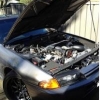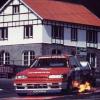Announcements
-
Similar Content
-
Latest Posts
-
@niZmO_Man thanks for that info, lucky I bought the gktech ones 🤙.
-
Never cheap out on brakes, tyres, suspension. I learnt the hard way at Oran Park lol
-
By TurboTapin · Posted
You got your answer when everything was OK after disconnecting your return line from the FPR. Why in the world are you running a 460, 2200CC injectors, etc. on stock 8mm lines? Keep the pump, ditch the lines. I used both 8mm lines as my feed and one of my Hicas 10mm lines as return. -
Also to note, in the Subaru world, Whiteline endlinks have been reported to break... often. So going Hardrace or GKTech would be my option.
-







Recommended Posts
Create an account or sign in to comment
You need to be a member in order to leave a comment
Create an account
Sign up for a new account in our community. It's easy!
Register a new accountSign in
Already have an account? Sign in here.
Sign In Now